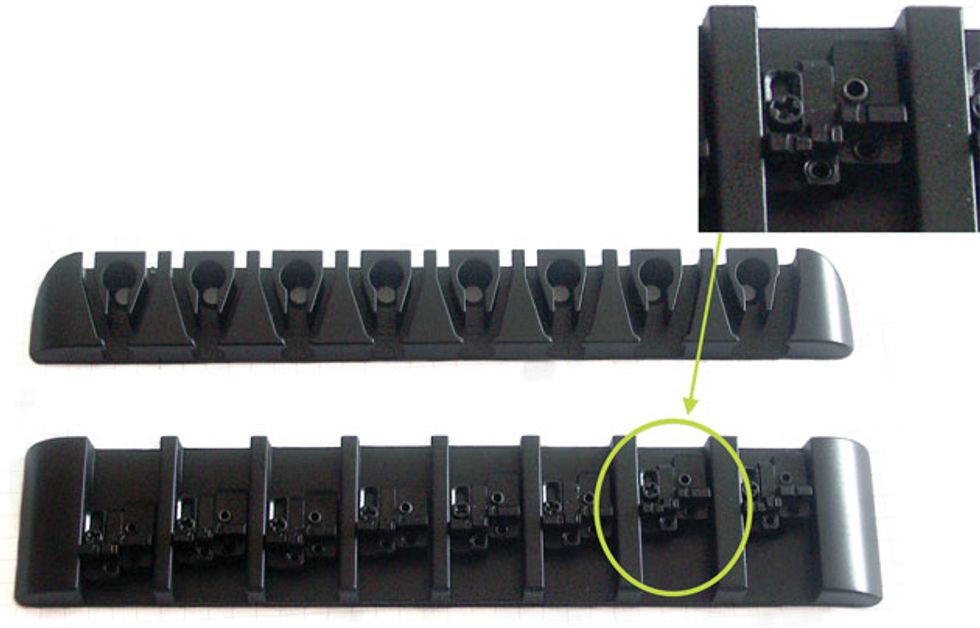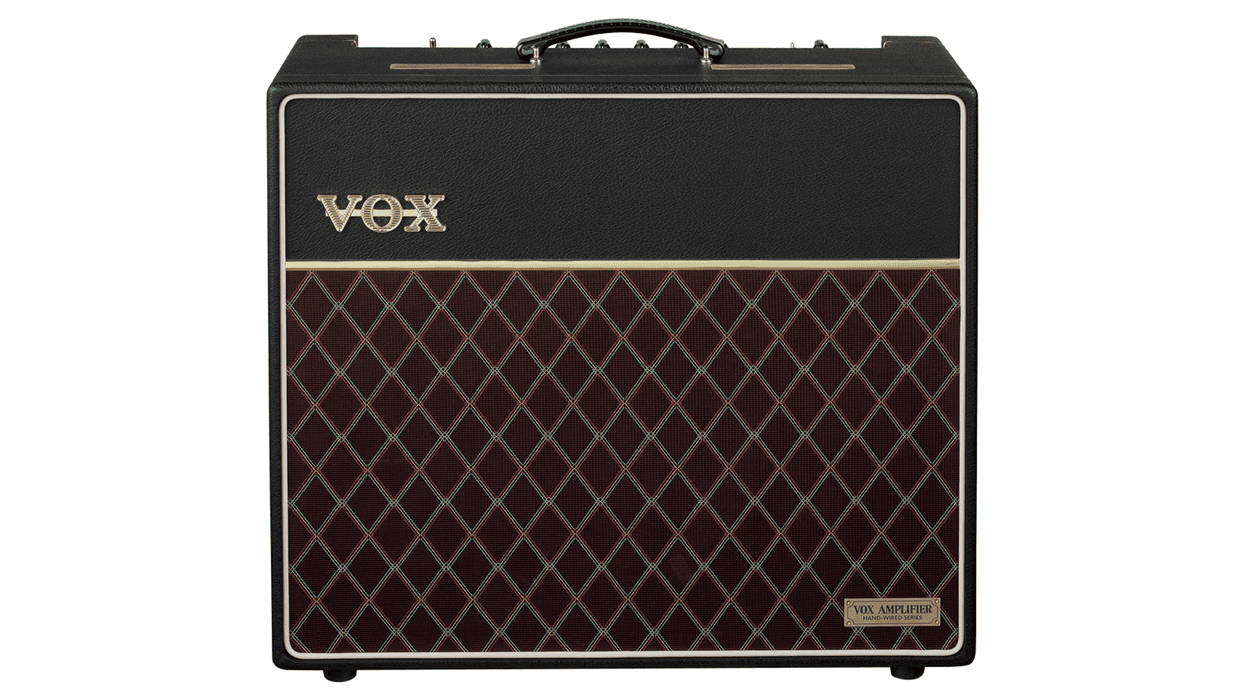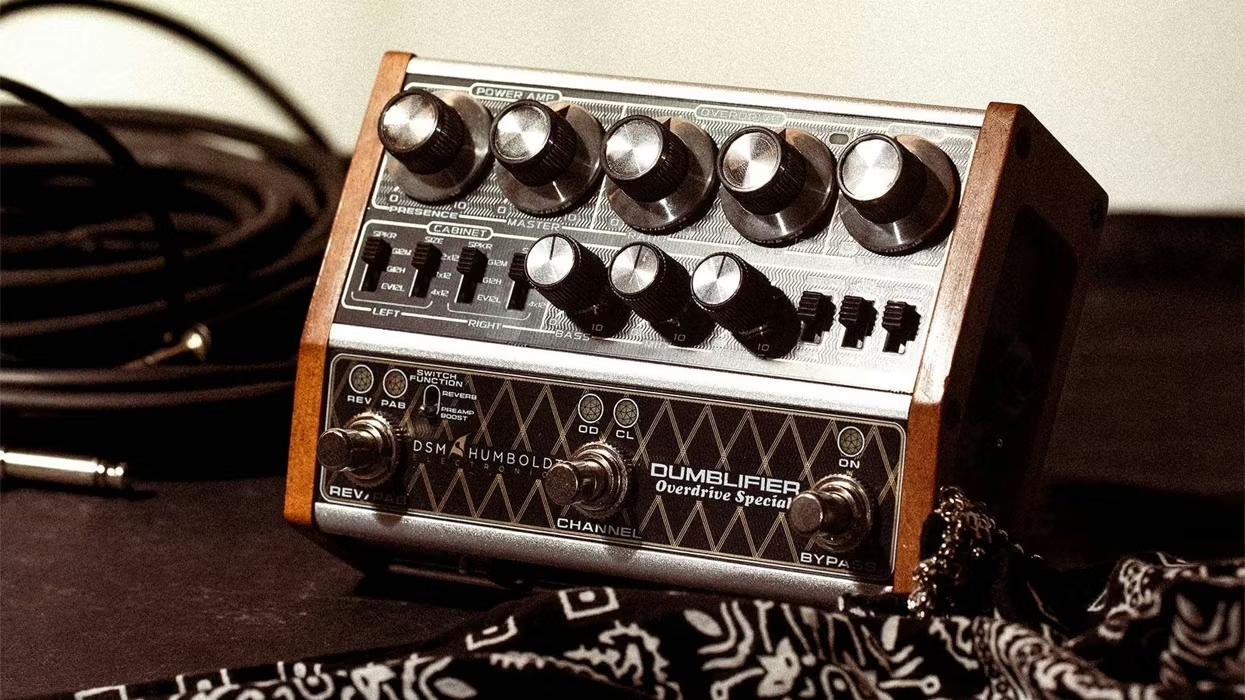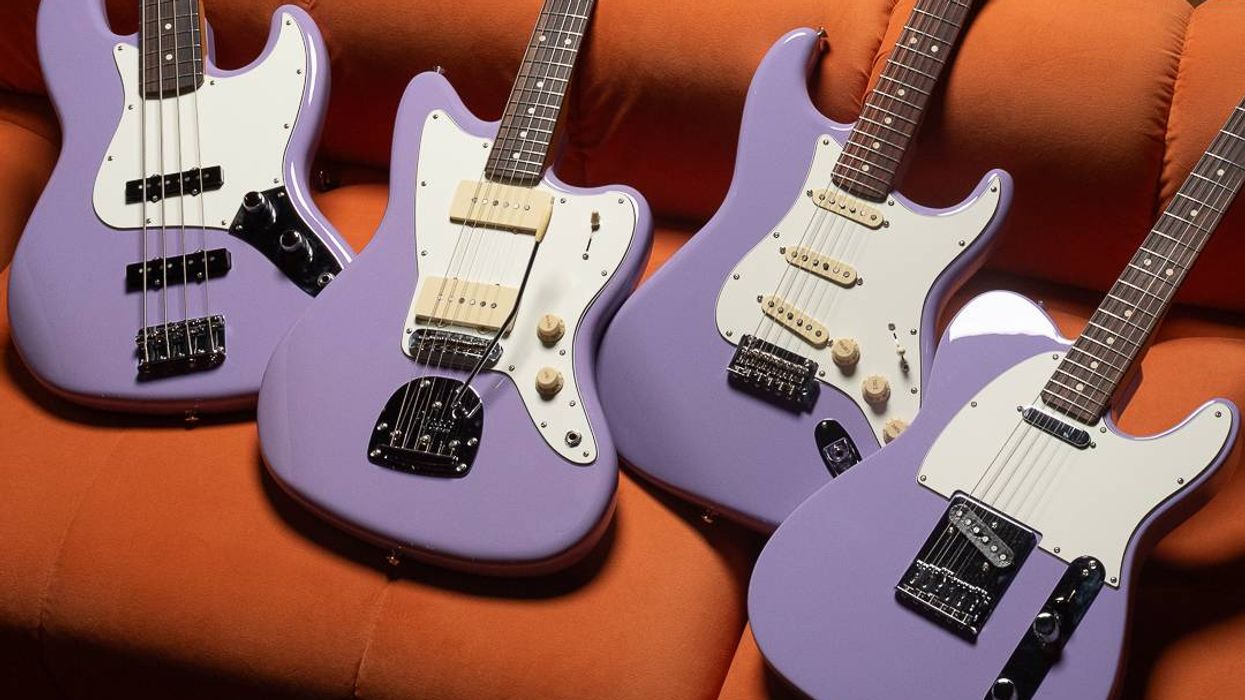Christopher Cardone with his custom 24-string bass. Photo courtesy Aaron Gibson
Once in a while a luthier receives a very special request from a customer. Some builders reject the challenge—which makes sense from a business standpoint because you can’t charge for all the time you spend on a one-time build—while others accept it. Some luthiers take the commission simply out of curiosity, while others do it for the extra exposure and buzz a custom oddity can generate.
After the 2014 winter NAMM, photos of a very unusual 24-string “bass” went viral (Photo 1). In particular, the huge headstock, which is almost the size of the body, immediately caught everyone’s attention. Let’s face it: A 12-string bass—a normal 4-string instrument that’s enhanced with a pair of octave strings for each standard string—is a rare find, but this one easily tops it.
Prat Basses accepted the challenge of building the 24-string beast, and looking at the photo many of us wonder, why would anybody want something like this? The man behind the instrument’s concept is Christopher Cardone, owner of Kalium Strings. Recently I asked him to explain why he commissioned this instrument.
“The best response is: Why not? It hadn’t been done and it seemed like a great idea,” Cardone says. “I’ve heard similar instruments sound so choral and orchestral, and I wanted that huge, multi-course tone for myself. Also, it’s a great showpiece for a string company. And last but not least, it’s huge, pretentious, and vicious.”
end of the bass—the bridge!
Finding the right string gauges could have been a real challenge, but as Cardone explains, running a string company was an advantage here. “I used our tension calculator to determine what gauges would make a balanced set. Because this bass has so many strings, I use a very light tension. The bass has a 33" scale and I tune it F# to F. I use a .174 for the F# and the resulting tension is about 33 pounds. I was able to keep all the strings within a half-pound of each other. To fully restring the bass takes a little over an hour.”
And does he have to sit to play it? “I can play it standing or seated,” he elaborates. “The reason you see so many sitting pics is that when I’m playing smaller, more intimate shows, I like to be face level with the audience. I like to get feedback from them as I play.”
Building a typical extended-range bass is mostly a no-brainer: Widening the fretboard and adding extra tuners really isn’t rocket science. There can be difficulties, such as dealing with extremely narrow string spacing, finding a manufacturer for those plus-sized pickups or other hardware, and maybe including a second truss rod. It’s certainly more work than building the average bass, but you rarely need to reinvent anything. A few drawings and some basic math should suffice, unless some constructional oddities chime in.
But this is different. Despite the first impression of the huge headstock, the real difficulty is on the other end of the bass—the bridge! Instead of a 24-string with consecutively tuned strings, Cardone wanted an 8-string bass with a pair of high-octave strings adjacent to each low string. This design required a special arrangement of strings and adjustability. No doubt Oscar Prat spent time drawing the headstock before he cut it, but creating the bridge definitely introduced greater problems.
A cleverly designed 24-string tailpiece and bridge. Photo courtesy ETS Bass & Guitar Hardware (ets-hardware.com)
Octave strings are usually pretty close to their lower ally, so the first problem is to find a space-saving arrangement for all 24 ball ends. The tailpiece in (Photo 2) reveals the solution. Cleverly designed channels route the three strings per course in such a way that they have an almost straight path to the bridge.
But once you get to the bridge itself, things get narrower and trickier. Even if you forego individual height adjustment and raise or lower all three strings at once, you still have to care about individual intonation, especially for all the highest strings.
The saddles on a 12-string guitar bridge are often split to allow separate intonation adjustment for the highest string, but here the saddle is just too small to do a three-way split. For this 24-string bridge, the designer solved the problem by adding a lockable slider on top of each saddle—almost like a tiny shuttle under the first octave string. This allows all three strings to be intonated individually.
So whenever you see the next unusual extended-range bass, don’t let the wide neck fool you: The trickiest stuff is almost always in the small details.









![Rig Rundown: AFI [2025]](https://www.premierguitar.com/media-library/youtube.jpg?id=62064741&width=1245&height=700&quality=70&coordinates=0%2C0%2C0%2C0)












 Shop Scott's Rig
Shop Scott's Rig















































